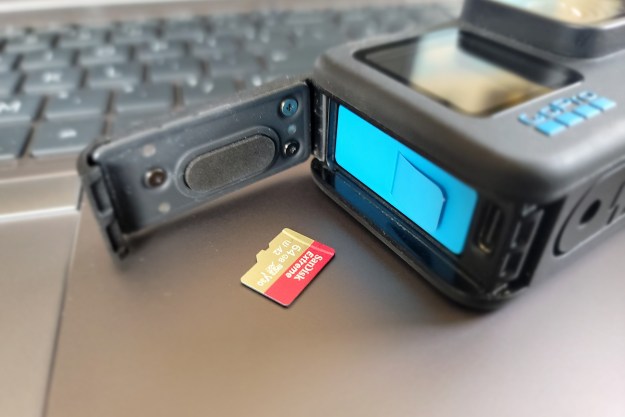Camera announcements at this year’s CES were on the lighter side, possibly due to the fact that Photokina – the big daddy of photo trade shows – took place just a few months prior. Nonetheless, there were a few highlights worth noting. The traditional camera makers are well aware that smartphones are a force to be reckoned with in the digital photography space, and are fighting back with features that phones can’t touch: bigger and better sensors, long optical zooms, and stronger image processors, not to mention that Wi-Fi is finally showing up in more cameras. Here are five models that demonstrate why when you want to take great photos, you still need the real thing.
Check out more top picks in our best of CES 2013 rundown.
Samsung NX300Samsung has become a major force in the digicam industry in a short period of time. The NX300 demonstrates why Samsung seems to understand better than the competition on what consumers want in a digital camera: a fully connected shooter that’s feature rich, easy to use, and takes great photos. But the buzz about this mirrorless, interchangeable lens camera is its ability to shoot beautiful high-definition videos in 3D, and 3D that actually doesn’t suck! Check out our first look on the Samsung NX300. |
Fujifilm X20Between its sibling the X100S and the Pentax MX-1, the X20 from Fujifilm is hands-down the most beautiful camera announced at CES. But it’s not just about good looks. Fujifilm stuff this camera with their new X-Trans CMOS II sensor and EXR Processor II that promise to deliver image quality that can keep up with DSLRs with larger sensor. With its high-quality construction, the X20 looks great strapped around any neck. Read our coverage on the X20 unveil.  |
Olympus TG-2If there’s one thing Olympus knows best, it’s how to make a tough camera. Their new TG-2 can take a beating: it can go underwater, all the way down to 50 feet. It’s shock proof and freeze proof, naturally. Besides its rugged features, there’s a serious camera in here. Olympus is using a higher quality back-illuminated CMOS sensor designed for better image quality, plus it has added a fast lens. Read our preview on this camera here.  |
Nikon D5200Although it was first seen in Europe last November, its CES 2013 unveiling marks its official release in the U.S. As the only DSLR announced at this year’s show, the D5200 features the same 39-point autofocusing system and 2,016-pixel RGB metering of the higher-end D7000. We can’t wait to try out this camera because we loved using its predecessor, the D3200. And yes, you can get it in three colors. Find out more about this APS-C-equipped shooter.  |
Canon PowerShot NLike many consumer electronics companies, Canon tends to be more conservative, which is why the PowerShot N is such a departure from anything we’ve seen from Canon. Designed for a younger, more connected generation, Canon’s response to the rise of smartphone photography is designed with photo sharing in mind. Whether the PowerShot N is successful remains to be seen, but Canon deserves to be commended for stepping outside the box and taking a risk. Watch our video about this unique shooter.  |
Editors' Recommendations
- The best photo printers you can buy in 2024
- The 15 best GoPro accessories in 2024
- When is the best time to post on Instagram?
- The best 360-degree camera apps for iOS and Android
- Landscape photography contest offers special Iceland prize


